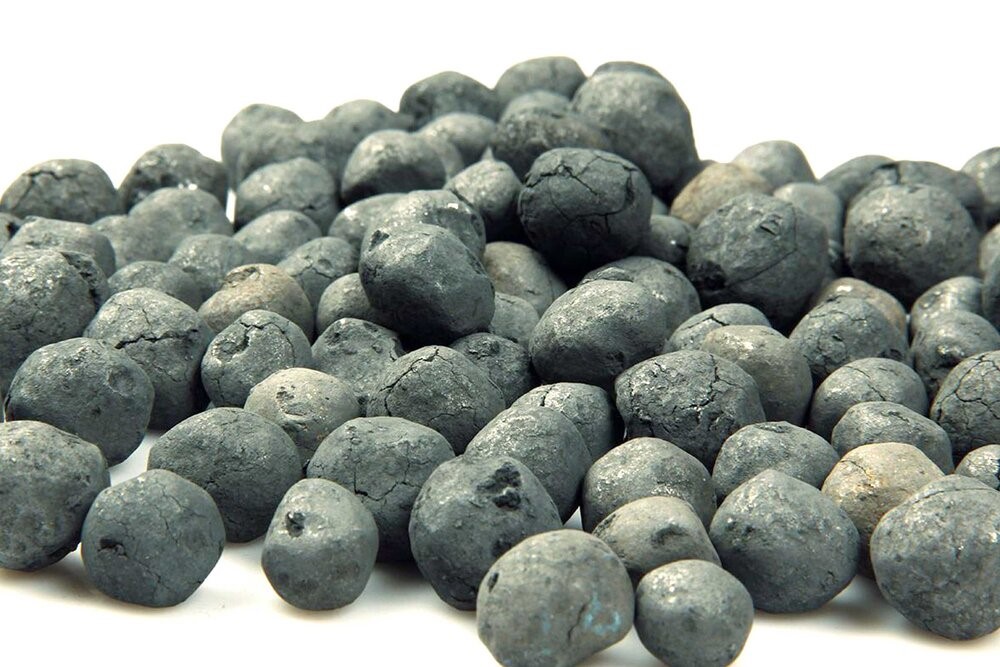Description

Disclaimer: Copyright infringement not intended.
Context
- The domestic sponge iron manufacturers fear a continuous shortage of iron ore may bring it to the brink of collapse.
- The ore shortage is due to the rampant export of the crucial steel-making raw material.
Sponge iron
- Sponge iron, also known as direct reduced iron (DRI), is a high-purity, metallurgical-grade iron (Fe) product produced by the direct reduction of iron ore in the form of lumps, pellets, or fines into iron by a reducing gas or carbon monoxide produced from natural gas or coal.
- This process reduces the oxygen content in the iron ore, resulting in a highly porous and spongy material, hence the name "sponge iron."
Production Process:
- Iron Ore Preparation: Iron ore is ground and mixed with coal or natural gas as a reducing agent and fluxes like lime or dolomite.
- Pelletization: The mixture is pelletized to form uniform-sized pellets.
- Reduction: The pellets are fed into a rotary kiln or vertical shaft furnace where they are heated to around 1000°C to 1200°C in the presence of a reducing gas (CO and H2).
- Sponge Iron Formation: In the kiln, the iron oxides are reduced to metallic iron, forming sponge iron with a high porosity.
- Cooling and Separation: The sponge iron is cooled and separated from the remaining non-metallic components (gangue).
.jpg)
Properties and Uses:
- Sponge iron has high iron content (typically 90% or more) and low levels of impurities.
- It is used as a raw material in electric arc and induction furnaces for steelmaking, where it is melted and alloyed with other metals and carbon to produce steel.
- It is also used as a substitute for scrap in electric arc furnaces, especially in regions where scrap availability is limited.
- Sponge iron is preferred for steelmaking due to its high purity, low sulfur, and phosphorus content, which helps in producing high-quality steel.
Sponge Iron and its shortage
- Sponge iron is used as a raw material to make finished steel in electric-arc or induction furnaces.
- India has been the world’s largest sponge iron-producing nation since 2003.
- 30% of India’s steel production come via this route.
- Without captive sources, the sector generally buys iron ore from merchant miners, including PSUs, to meet its annual needs of around 80-85 million tonnes (MT). (FY24).
- The skyrocketing exports leaves a very minimum quantity available for use by secondary steel sector players.
- Primary steel producers have also started exporting iron ore in its various forms—fines, lumps, and pellets—from their captive mines. They are also buying from merchant miners.
- The sponge iron sector is incurring losses operating at an 80-85% capacity utilisation level due to inadequate availability of iron ore and its higher costs.
Differing views of stakeholders
- Currently, iron ore of less than 58% Fe is allowed for export. Companies are requesting the government to reduce this to 54 Fe grade as sponge iron industry can use iron ore above 54 Fe grade.
- Miners, however, differ. Exports of iron ore from the country are mainly fines below 58% Fe, which have no domestic market. Currently, the non-moving stock of more than 180 million tonnes of mainly low-grade iron ore is lying at mine heads.
- It is well known that the domestic steel industry consumes ores of +62% Fe content, unlike the major steel-producing country China, which consumes low-grade iron ore up to 55% Fe grade. Owing to the fact that there is no domestic market for such low- grade iron ore (-58% Fe), hence there is no option but to export and monetise these low-grade ore, which are mainly in the form of fines.
Key Stats
- Iron ore exports, including pellets, almost tripled in 2023 to 44 MT from 16 MT a year ago. The floodgates opened following the withdrawal of export duty in November 2022 for ores with less than 58% Fe from 50% imposed in May 2022.
- Iron ore production, on the other hand, has not increased in proportion, from 254 MT in FY22 to 258 MT in FY23. On the contrary, steel production increased from 121 MT in 2021-22 to 127 MT in 2022-23. During the April-December period of the current fiscal year, crude steel production stood at 106 MT.

Moving Ahead
- According to the National Steel Policy 2017, India needs to produce 80 MTPA sponge iron by 2030-31 to reach the targeted 300 MT steel production capacity by 2030-31.
- The secondary steel sector has embarked on a 25% capacity expansion, which is at different stages of completion.
- At least seven state-based sponge iron manufacturing associations from West Bengal, Odisha, Karnataka, Chhattisgarh and others have written the Union Steel ministry urging an immediate ban on exports of all forms of iron ore as they are “grappling with a severe shortage of the raw material”.
- Industry experts said the government should immediately address pending litigations to expedite the reopening of the mines that have been closed since 2014 to enhance iron ore production in the country.
|
PRACTICE QUESTION
Q. How many of the following statements are incorrect?
1.Sponge iron is produced by the direct reduction of iron ore in the presence of a reducing gas or carbon monoxide.
2.Sponge iron has high iron content (typically 90% or more) and low levels of impurities.
3.India has been the world’s largest sponge iron-producing nation.
Choose the correct code.
A)Only one
B)Only two
C)All
D)None
Answer D) None
|














